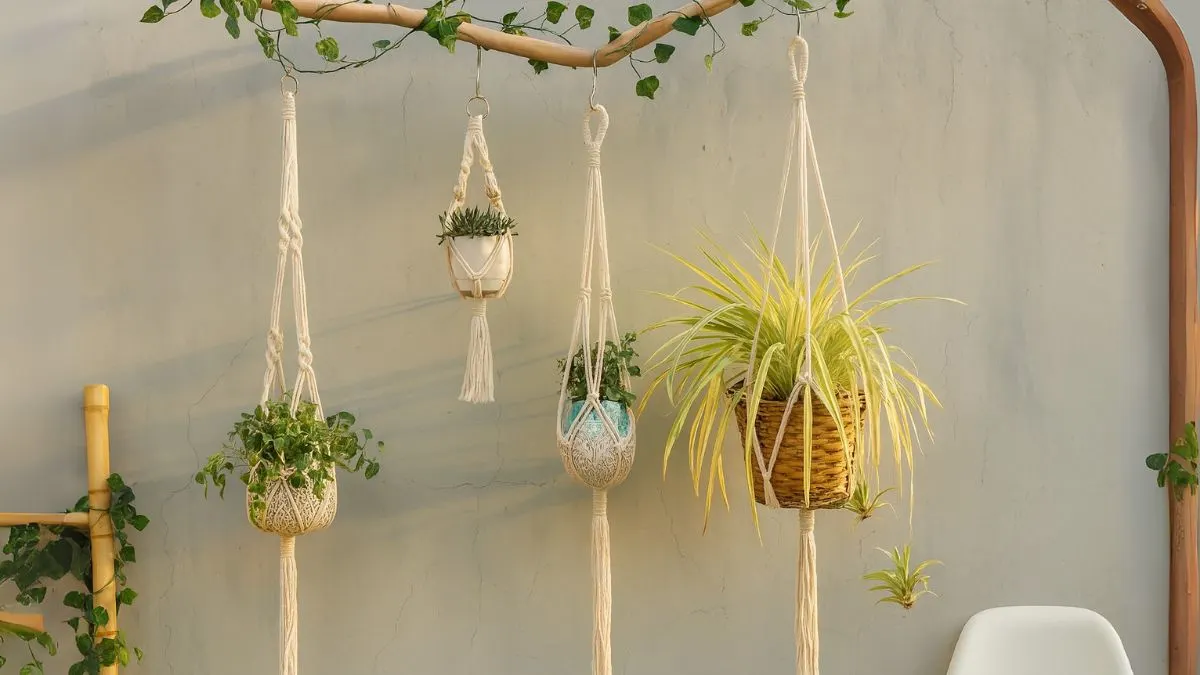Hanging plants are more than just greenery—they’re statement pieces that can turn any corner into a calming retreat. Whether you live in a small apartment or a spacious home, these plants are perfect for suspending from your ceiling or setting on a high shelf. But unlike regular potted plants, they require unique care.
As someone who has filled my living room with trailing greenery, I can confidently say that the secret lies in soil choice, watering habits, and regular fertilisation. In this guide, you’ll learn practical steps on how to care for hanging plants so they thrive year-round.
Choosing the Right Soil Mix

One of the most overlooked aspects of caring for hanging plants is soil.
- Always use a lighter, well-aerated soil and potting mix. Heavy soil can compact over time and suffocate roots.
- Consider adding perlite, peat moss, or coco coir to improve drainage.
- Because hanging plants dry out faster, soil that retains just enough moisture is key.
Tip: If you live in hot regions like Texas or Rajasthan, mix in water-retentive crystals to reduce frequent watering.
Watering Tips for Hanging Plants
Unlike floor plants, hanging baskets lose moisture quickly because of increased airflow.
- The golden rule: water often, but don’t flood.
- Check the soil by sticking your finger 1–2 inches deep. If it feels dry, it’s time to water.
- In summer, watering might be needed every day; in winter, once or twice a week is enough.
- Always ensure drainage holes are present to avoid root rot.
Personal note: I once lost a Boston fern to overwatering because the basket didn’t drain. Now I always check pots before hanging them.
Also Read: Viola Flowers: Tiny Blooms With Big Personality—And Easy Care!
The Importance of Regular Fertilisation
Hanging plants need a steady supply of nutrients to maintain lush growth.
- Use a balanced, water-soluble fertiliser every two weeks during growing seasons.
- For flowering hanging plants like petunias, switch to a bloom booster high in phosphorus.
- Organic options like compost tea also work beautifully.
By practicing regular fertilisation, you’ll notice greener leaves, stronger stems, and healthier blooms.
Placement: Sunlight and Positioning
Where you place your plants makes all the difference.
- Most indoor hanging plants prefer bright, indirect light.
- South or east-facing windows in the USA and Canada are ideal.
- Avoid direct midday sunlight unless the plant is sun-loving, like bougainvillea.
- Rotate baskets every few weeks so all sides receive equal light.
Best Hanging Plants to Grow Indoors
- Spider Plant (Chlorophytum comosum): Spider plants are low-maintenance and tolerate irregular watering. Their arching leaves and baby plantlets make them perfect for hanging baskets.
- Pothos (Epipremnum aureum): Known as the “money plant,” pothos thrives in low light and minimal care. It’s a great choice for beginners.
- Boston Fern (Nephrolepis exaltata): Boston ferns love humidity and filtered light. Just remember to water often to prevent drying.
- String of Pearls (Senecio rowleyanus): This succulent adds a quirky touch with bead-like leaves cascading down. It thrives in well-drained soil and bright light.
- English Ivy (Hedera helix): An elegant option that can trail beautifully. Keep it in cooler spots with indirect sunlight.
Also Read: Fairy Bells in Your Garden? Discover the Magic of the Wood Sorrel Plant
Quick Care Table for Hanging Plants
Plant Name |
Soil Type |
Watering Needs |
Sunlight Preference |
Extra Tip |
Spider Plant |
Lighter, well-aerated potting mix |
Moderate |
Indirect light |
Remove brown leaf tips |
Pothos |
Standard mix with compost |
Low to medium |
Low to bright light |
Trim vines to encourage bushiness |
Boston Fern |
Moist, airy soil |
Water often |
Filtered light |
Mist leaves regularly |
String of Pearls |
Sandy, fast-draining mix |
Minimal |
Bright, indirect light |
Avoid overwatering |
English Ivy |
Loamy, fertile soil |
Moderate |
Indirect light |
Prune to control growth |
Caring for hanging plants isn’t complicated—it’s about paying attention to their unique needs. Use a lighter, well-aerated soil and potting mix, ensure regular fertilisation, and remember to water often. These simple steps will keep your hanging baskets vibrant and thriving.
From Spider Plants to Pothos, and from quirky String of Pearls to classic English Ivy, the joy of having greenery perfect for suspending from your ceiling or setting on a high shelf is unmatched.
So, if you’ve been thinking of elevating your home décor—literally—start with a hanging plant. Trust me, once you see them thriving, you’ll never look at indoor gardening the same way again.






